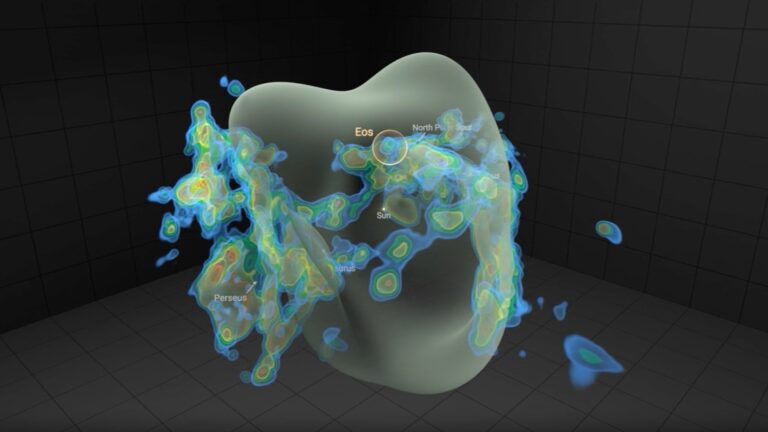
Extreme ‘zombie star’ capable of ripping human atoms apart is shooting through the Milky Way – Live Science
2025-04-23T14:37:28Z
Astronomers have discovered that the magnetar SGR 0501+4516 is speeding through our galaxy at more than 110,000 mph. This unusually fast speed hints that it was not born as expected, which could help explain the puzzling origin of some fast radio bursts.
Magnetars are capable of ripping apart anything that gets too close to their powerful magnetic fields.
Astronomers have spotted an immensely powerful “zombie star” shooting through the Milky Way at more than 110,000 mph (177,000 km/h). The stellar cannonball, which has a magnetic field capable of ripping humans apart atom by atom, also has a puzzling origin story that could alter our understanding of similar stellar remnants.
The surprising object, dubbed SGR 0501+4516 , is a magnetar, a neutron star with a powerful magnetic field. Neutron stars are the remains of dead stars that have collapsed into shriveled husks the size of small planets while retaining as much mass as sunlike stars. This makes neutron stars the densest known cosmic objects, behind the hypothesized singularities of black holes .
The incredibly compact object, which is one of only 30 known magnetars in the Milky Way , was first discovered in 2008, when it was around 15,000 light-years from Earth. But in a new study, published April 15 in the journal Astronomy & Astrophysics , researchers analyzed data of subsequent sightings of SGR 0501+4516 from the Hubble Space Telescope and the European Space Agency’s Gaia spacecraft and found that the stellar remnant is moving through our galaxy much faster than expected.
Magnetars are among the most magnetic objects in the universe , and SGR 0501+4516 is no exception. Experts think the object’s magnetic field is around 100 trillion times more powerful than Earth’s protective shield.
If SGR 0501+4516 “flew by Earth at half the Moon’s distance, its intense [magnetic] field would wipe out every credit card on our planet,” NASA representatives wrote in a statement . “If a human got within 600 miles, the magnetar would become a proverbial sci-fi death-ray, ripping apart every atom inside the body.” However, the undead star is not expected to get anywhere near the solar system.
Related: Immensely powerful ‘magnetar’ is emitting wobbly radio signals in our galaxy — and scientists can’t explain them
Magnetars are among the most magnetic objects in the universe. (Image credit: ESA)
The discovery challenges what we know about how magnetars form. Until now, researchers assumed that these objects are born from the explosions of dying stars that get blown apart before they are reforged into neutron stars. This is what researchers assumed had happened to SGR 0501+4516, which was originally spotted close to the supernova remnant HB9. However, the new study showed that the magnetar is moving too fast and in the wrong direction to have originated from this particular cosmic crime scene.
Sign up for the Live Science daily newsletter now Get the world’s most fascinating discoveries delivered straight to your inbox. Contact me with news and offers from other Future brands Receive email from us on behalf of our trusted partners or sponsors
“Tracing the magnetar’s trajectory thousands of years into the past showed that there were no other supernova remnants or massive star clusters with which it could be associated,” NASA representatives added.
Uncertain origins
The researchers are still unsure exactly how SGR 0501+4516 was created. But they predict that it formed through the direct collapse of a white dwarf — the leftover core of a star after it has exhausted its fuel — rather than via a stellar explosion.
“Normally, the [supernova] scenario leads to the ignition of nuclear reactions, and the white dwarf exploding, leaving nothing behind,” study co-author Andrew Levan , an astronomer at Radboud University in the Netherlands and the University of Warwick in England, said in the statement. “But it has been theorized that under certain conditions, the white dwarf can instead collapse into a neutron star. We think this might be how [this magnetar] was born.”
This formation method also hints at the mysterious origin of some fast radio bursts — extremely brief and intense flashes of radio-wave radiation — detected coming from faraway galaxies that are too ancient to host exploding stars, the researchers wrote. However, more data is needed to tell for sure.
Auto-posted from news source






